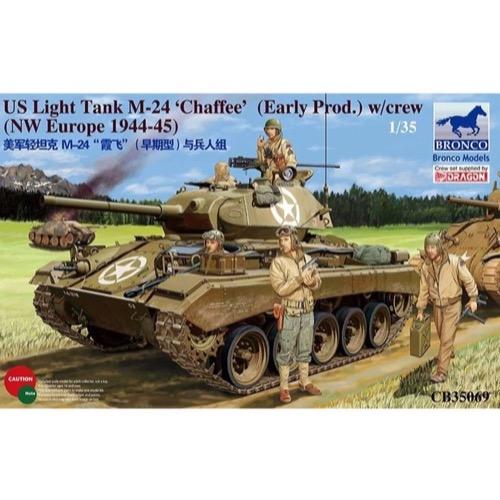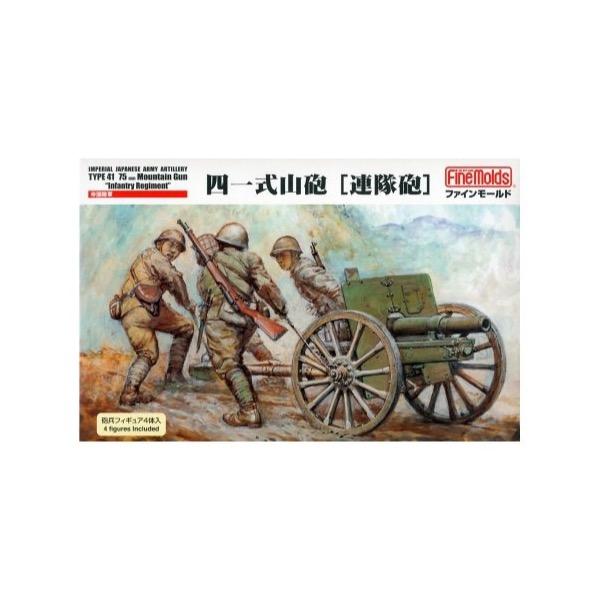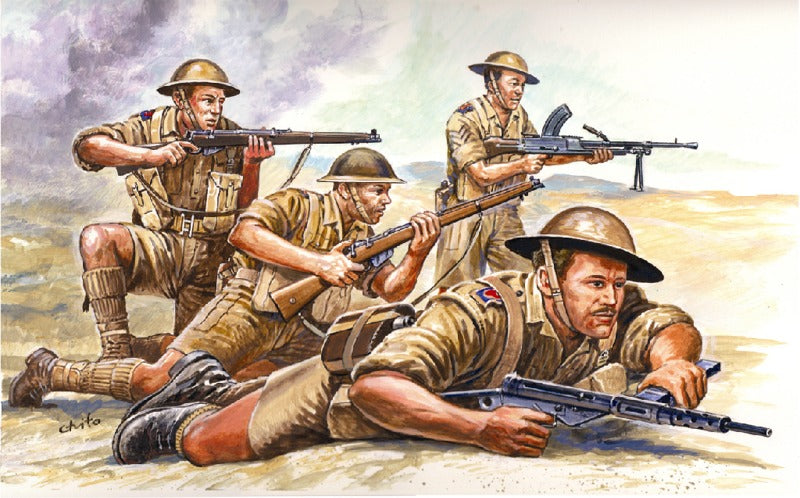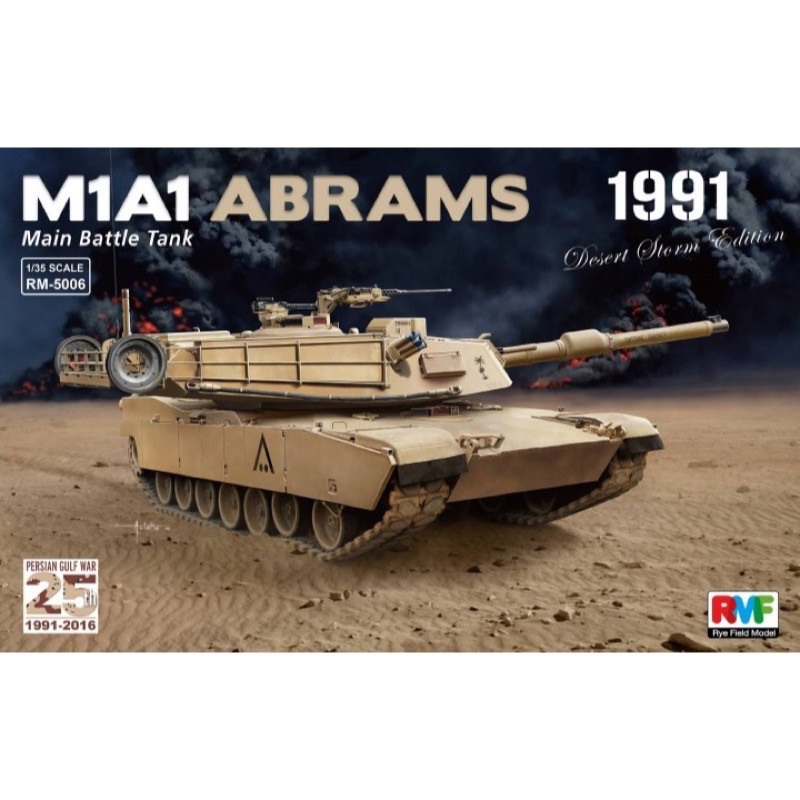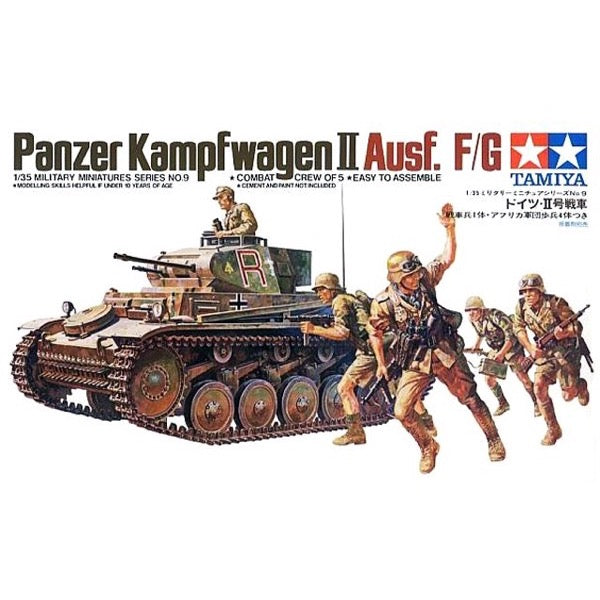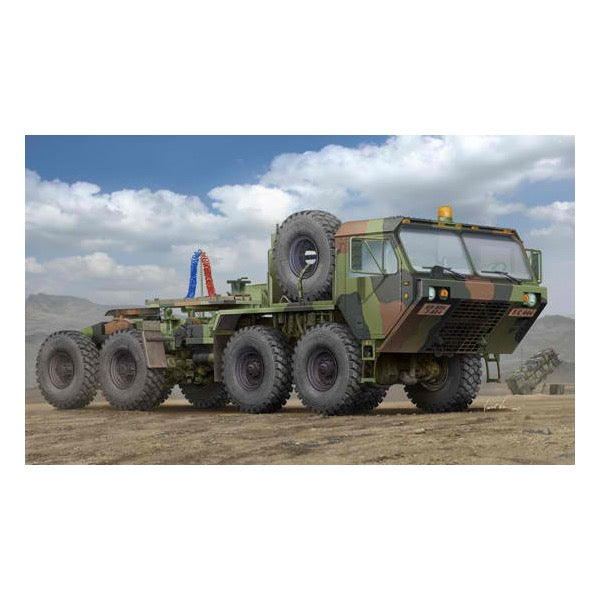
Trumpeter 01021 1/35 Hemit M983 Tractor*
42.00
$
<p>The M983 is a tractor unit for use with the trailer-mounted MIM-104 Patriot missile system. It can also be used with the Interim Stryker Recovery System, or other trailers. An earlier variant fitted with a 30 KW generator and crane mounted behind the cab was used to tow the MGM-31 Pershing Erector Launcher in CONUS. The M983A2/A4 Light Equipment Transporter (LET) tractor is mainly used to transport construction and engineer equipment. It has a 45,000 lbs. (20,430 kg) 2 speed hydraulic winch mounted behind the cab used to load the trailer. It does not have a self-recovery winch.</p>
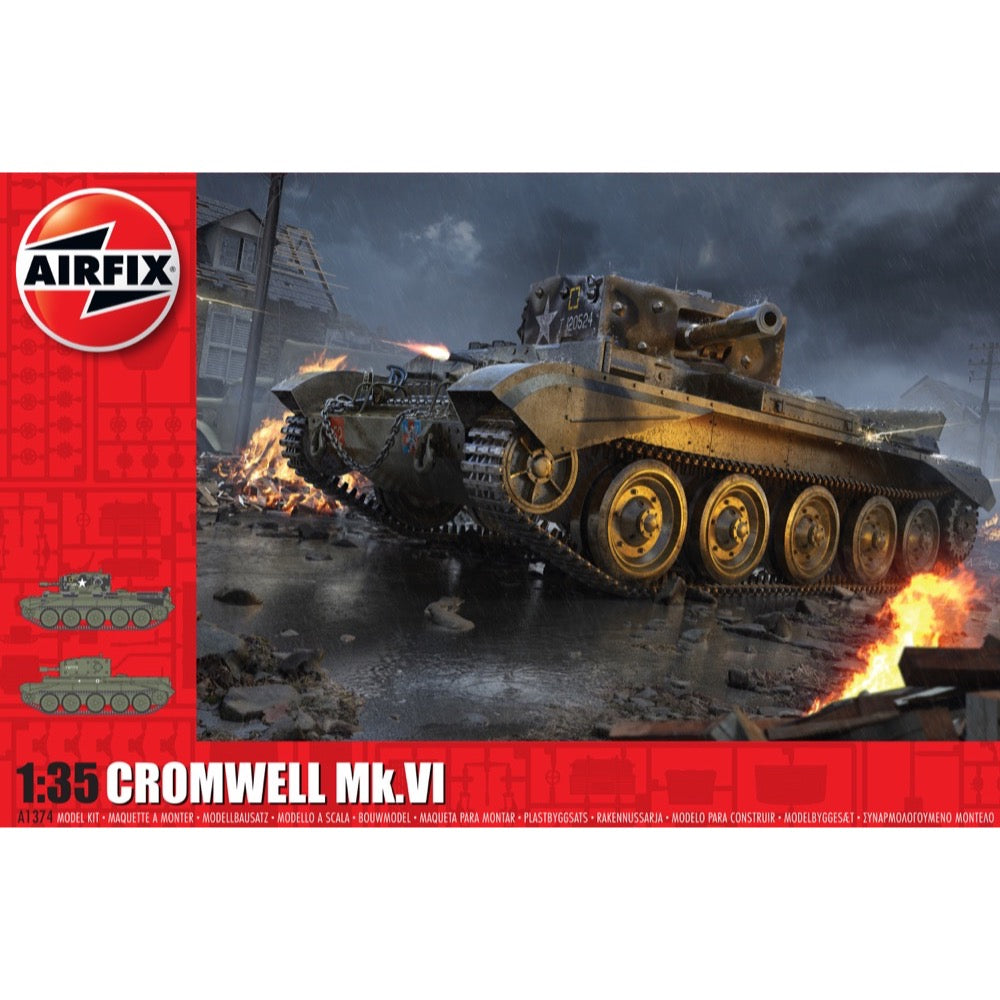
Airfix A1374 1/35 Cruiser Tank Mk.VIII A27M Cromwell Mk.VI
27.00
$
<p>Even though the new British A27M Cromwell Tank would not make its combat introduction until the Allied invasion of Normandy in June 1944, the speed and mobility of this excellent new tank would soon earn it an enviable reputation amongst Allied troops, who came to rely on the support they provided.</p><p>The majority of Cromwell Tanks were armed with the standard 75mm ROQF gun, however, the less numerous Mk.VI variant would provide specialist infantry close support with its 95mm Howitzer and were consequently never too far away from the action. Firing a high explosive hollow charge shell, the tank was used to overcome fortified positions, such as concrete bunkers and pillboxes which stood in the way of the infantrys advance and could even lay smoke-screens if required. With its distinctively short barrel, the Mk.VI also featured a large counterweight on its main armament, which was necessary in helping to balance the gun.</p><p>Approximately 340 of these specialist tanks were eventually produced, which would prove to be extremely effective as Allied ground units pushed German forces back towards their homeland. Despite their impressive speed, the Cromwells were no match for the firepower of the German heavy tanks and would have to rely on speed and stealth for their battlefield survival.</p><h3>Specifications</h3><ul>
<li>Item Length - Without Packaging (cm): 18.1</li>
<li>Item Height - Without Packaging (cm): 7.11</li>
<li>Item Width - Without Packaging (cm): 8.3</li>
<li>Item Scale: 1:35</li>
<li>Contents (what's in the box) sets: Sprues & decals</li>
<li>Finish: Plastic</li>
<li>Number of Scheme options: 2</li>
<li>Skill Level: 3</li>
<li>Flying Hours: 3</li>
</ul>
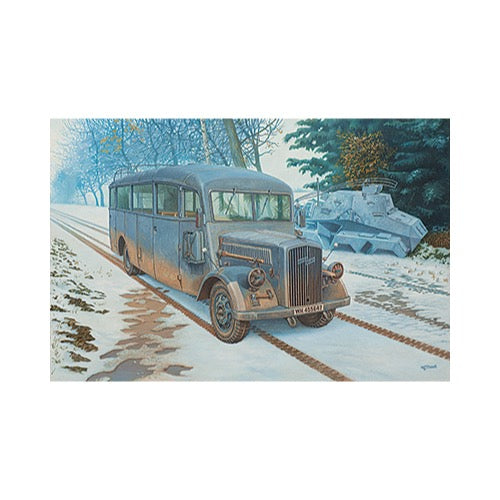
Roden 807 1/35 Opel 3.6-47 Omnibus Model W39 Ludewig-built Early
26.00
$
<p>In 1939 Germany was rapidly preparing for global hostilities. The plans of the German command supposed an instantaneous capture of quite large areas of other countries, and therefore special attention was paid to the question of the greatest possible motorization of infantry units. Besides a large number of different types of trucks which were already in the Wehrmacht's inventory, staff buses also began to be taken on charge, whose main task was the conveyance of officers during offensive actions of the army with a likely prospect of minimal resistance by an opposing party in the conflict.</p>
<p>The practice of building buses on a truck's chassis had existed for a long time, and therefore the most common types of buses which came into the German's inventory were based on the most widely used trucks. One of the most popular trucks at this time was the well-known Opel Blitz, and on its chassis was designed a standard army bus (at the time the more common term for it was "omnibus").</p>
<br>The Ludewig firm which was engaged in designing the bus, was located in Essen and had great experience in the manufacture of civilian multiseat vehicles. The standard chassis of the three ton truck was extended a little bit (up to 4450 mm), and the frame structure was reinforced. The original all-metal body of the new bus was quite elegant in outline, and only the front part where the engine was hidden, and the classic radiator with its distinctive logo, immediately reminded one of its predecessor, the famous "Blitz". Inside the cabin were several rows of seats which could be easily demounted if necessary (transportation of bulk goods, medical equipment, etc.).
<p>Series production of the bus, officially designated the Opel 3.6-47 type W39, started in the second half of 1939, almost at the same time as the invasion of Poland by Germany and the start of WWII. At first, the number of vehicles produced per month was very small, but already in 1940 about one hundred units per month off were coming off the production line in Essen. Series production lasted until mid-1943, when the situation became worse for Germany at the Front, basic industrial materials were in short supply, and as a result, Ludewig had to seriously simplify the structure of the bus. During this period 2,880 units of the early version were produced overall, which were sent both to the Eastern Front in Russia, and to the Afrika Corps of General Rommel in North Africa.</p>
<p>In addition to its main purpose - the conveyance of Wehrmacht officers - buses had to perform various other functions such as those of mobile headquarters, telephone exchange and radio station, mobile bakery and laundry, etc. Special note should be made of their role in transporting wounded from battlefield to hospital - rows of seats were removed and in their place several stretchers with wounded could be easily brought through the back door that opened into the interior, thus leaving space free for the installation of medical equipment.</p>
<p>Opel Blitz 3.6-47 buses were used by the army until the very end of the war, but immediately afterwards they quickly disappeared, giving way to more modern developments of the Opel concern during the early postwar years.</p>
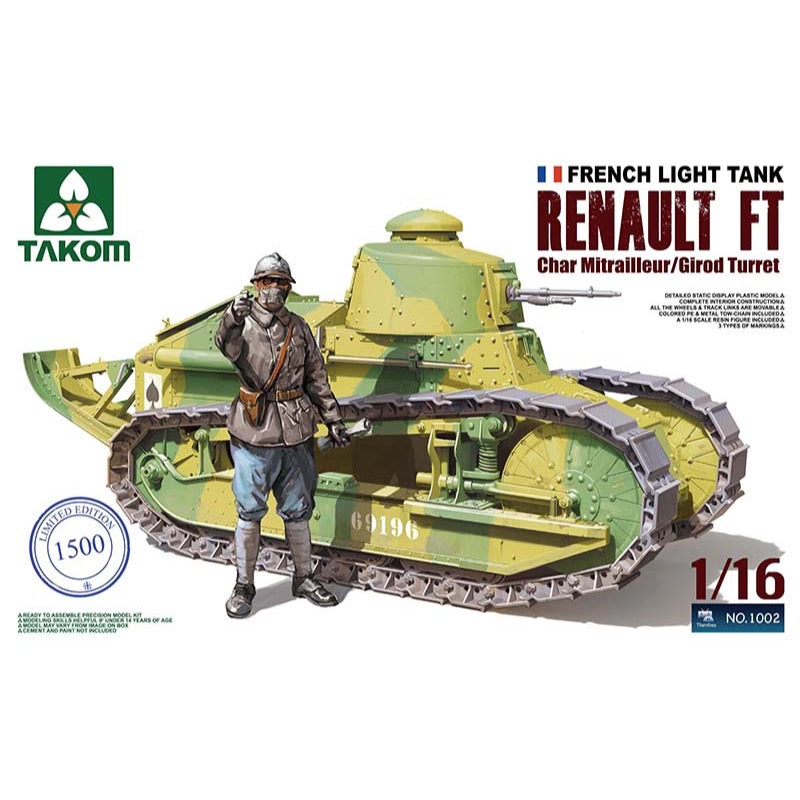
Takom 1002 1/16 French Renault w/ Gun Machine Limited Edition
62.00
$
<p>The Renault FT, frequently referred to in post-World War I literature as the "FT-17" or "FT17", was a French light tank that was among the most revolutionary and influential tank designs in history. The FT was the first production tank to have its armament within a fully rotating turret. The Renault FT's configuration – crew compartment at the front, engine compartment at the back, and main armament in a revolving turret, which became and remains the standard tank layout. As such, historians of armoured warfare have called the Renault FT the world's first modern tank. </p>

MiniArt 37057 1/35 T-55A Early Mod. 1965
29.00
$
<p>Kit contains model of Soviet medium tank T-55A. </p>
<br>
<ul>
<li>HIGHLY DETAILED MODEL </li>
<li>WORKABLE TORSION BARS </li>
<li>ALL HATCHES CAN BE POSED OPEN OR CLOSED </li>
<li>INDIVIDUAL TRACK LINKS </li>
<li>TOTAL DETAILS 898 </li>
<li>718 PLASTIC PARTS 1</li>
<li>54 PHOTOETCHED PARTS </li>
<li>26 CLEAR PLASTIC PARTS </li>
<li>9 VARIANTS OF PAINTING AND MARKING</li>
</ul>
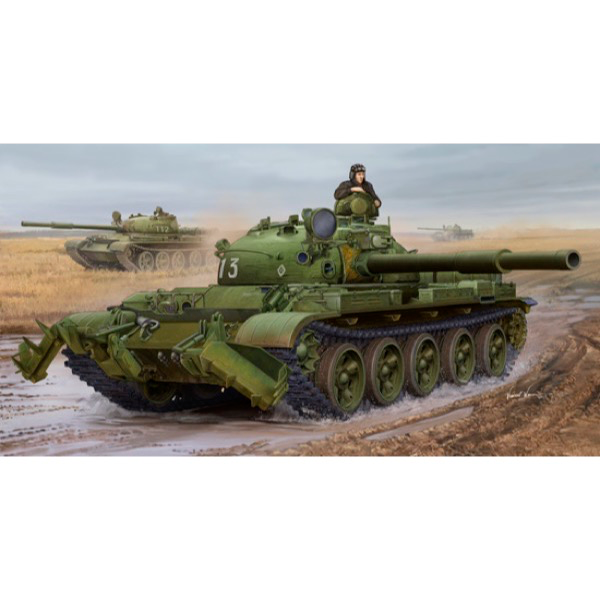
Trumpeter 01550 1/35 Russian T-62 Mod.1975 - KMT-6 Mine Plow*
30.00
$
<p> As a successor to the T-55, the T-62 is equipped with a new 2A20 115 mm smoothbore on its foundation. Differences between the two start with the T-62 possessing a redesigned new turret for the seat and has a further lengthened chassis. Otherwise both models possess same load-bearing wheels, crawlers, engines, gearboxes and external fuel tanks.</p>


